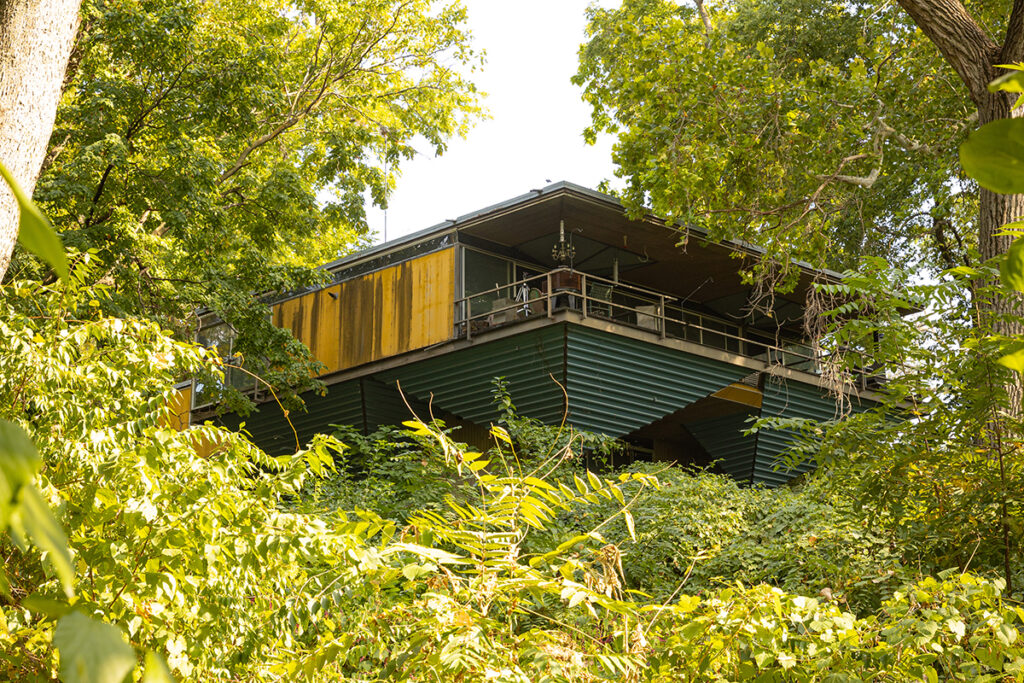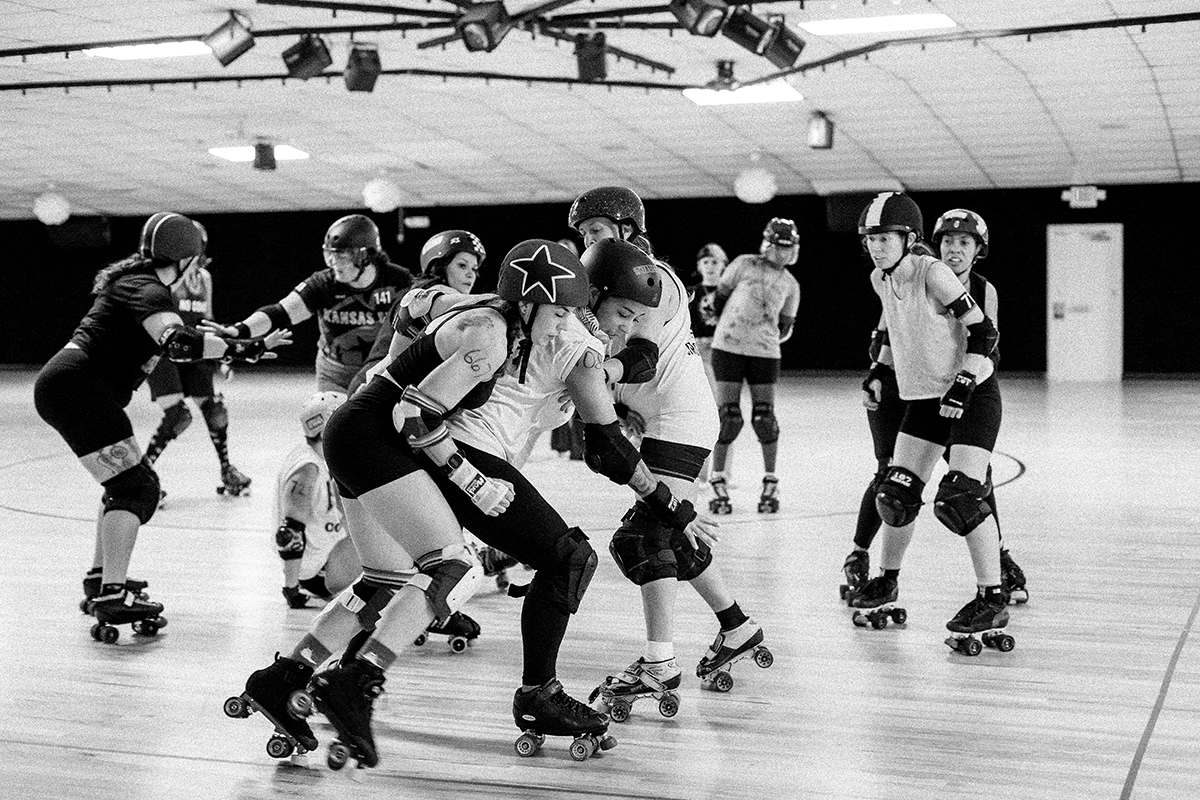From its unique exterior colors to its plexiglass dome roof, the Yanda house doesn’t quite fit the residential area surrounding it. Located in the Roanoke area, the geometric home looks more like a spaceship that just happened to land right here in Kansas City.
The house was built in 1966 by architect Albert J. Yanda for himself and his wife, Emma. At the time, Yanda was a well-known American architect who studied industrial design at the Kansas City Art Institute. Known for his distinct futuristic and structural designs, Yanda used materials like steel, concrete and even glass when designing his buildings. For his own house, he used all these elements and incorporated striking colors like blue and yellow—and did it all on a plot of land considered to be “unbuildable.”
The backside of the home stretches out over a hill, with a large glass balcony jutting out 40 feet from the ground. With blue triangular lifts on the bottom, the home is hard to miss from the back. The front of the home, meanwhile, is tucked behind trees and has a low profile, but peeking through the foliage, drivers can still see the half-globe glass roof, along with the cabled supports and steel posts on the roof.
The inside is just as interesting as the exterior.
“The interior of the house is yacht-like or aeronautical,” says Scott Lane, founder of KCmodern and past board president for 18 years, and whose organization is all about preserving and educating the public about Kansas City’s modern architecture.
There are many personal elements in the home that Yanda intentionally added, Lane says. For example, because he was an amateur guitarist, Yanda designed the “dome” space for its good acoustics. On the main floor, there is a sunken living room, a kitchen, two auxiliary bedrooms and a stairs that lead down to the primary bedroom and bathroom. The home became known as the “Four Seasons House” because of its innovative glass features and open floor plan.
“The house was quite a curiosity in an old neighborhood, inspiring many opinions—probably more during construction than when finished,” Lane says. “Many people would photograph it from Roanoke Park below, that being its most dramatic perspective.”
The futuristic home still remains in good condition, despite being built on an “unbuildable” piece of land.





